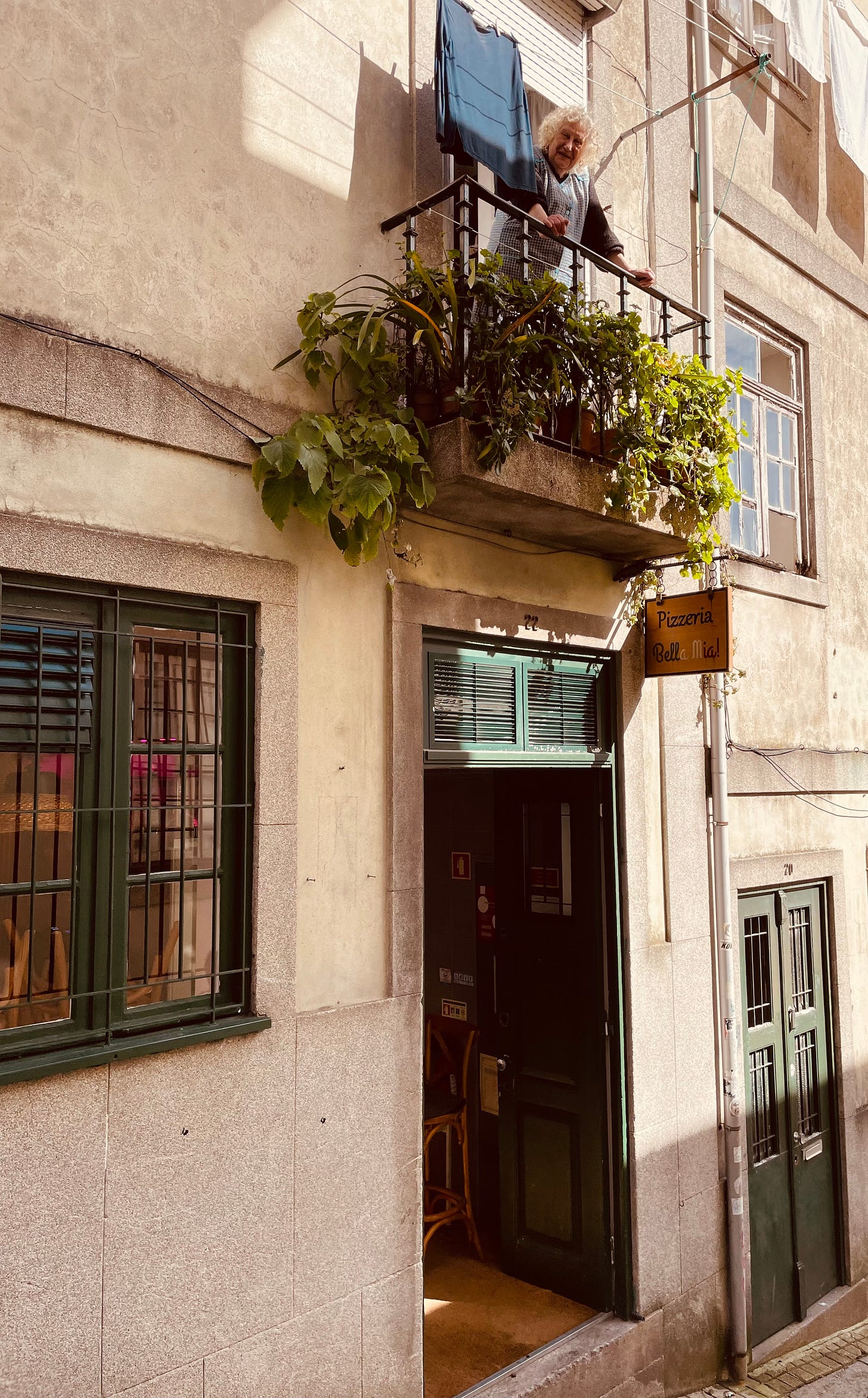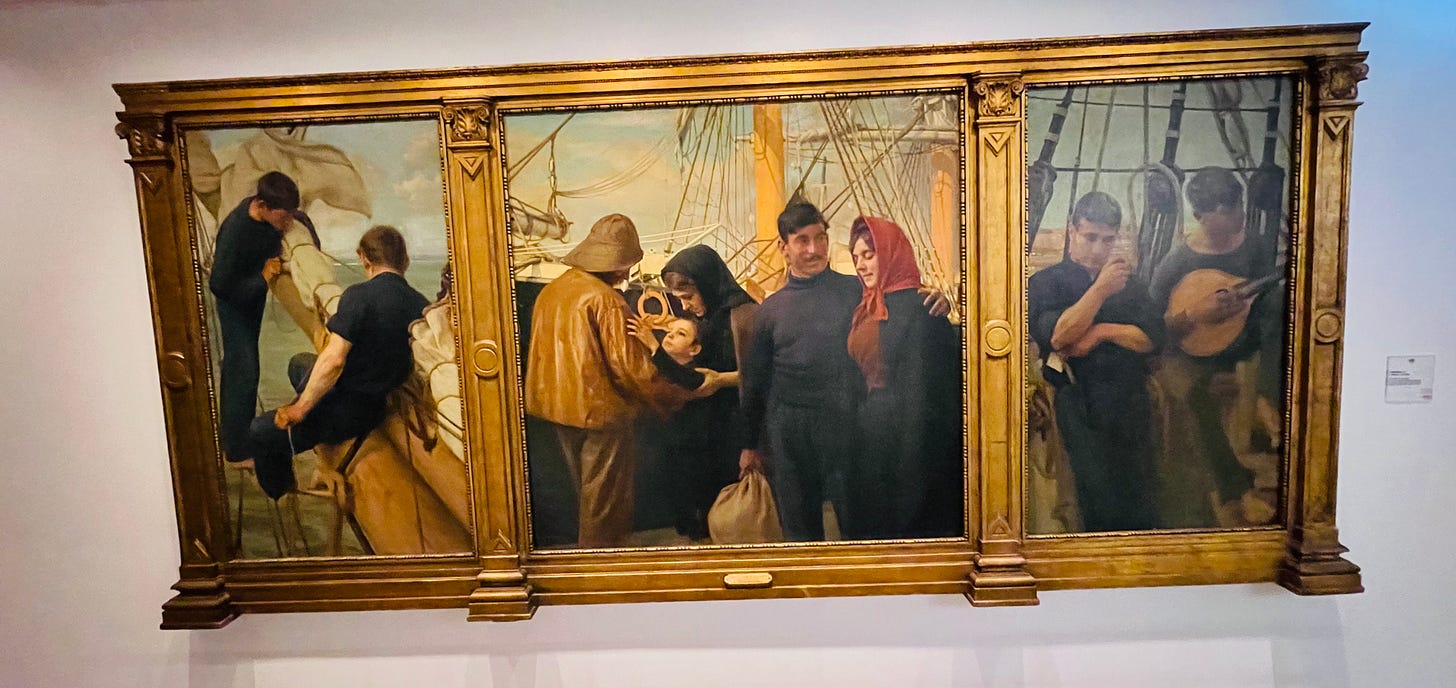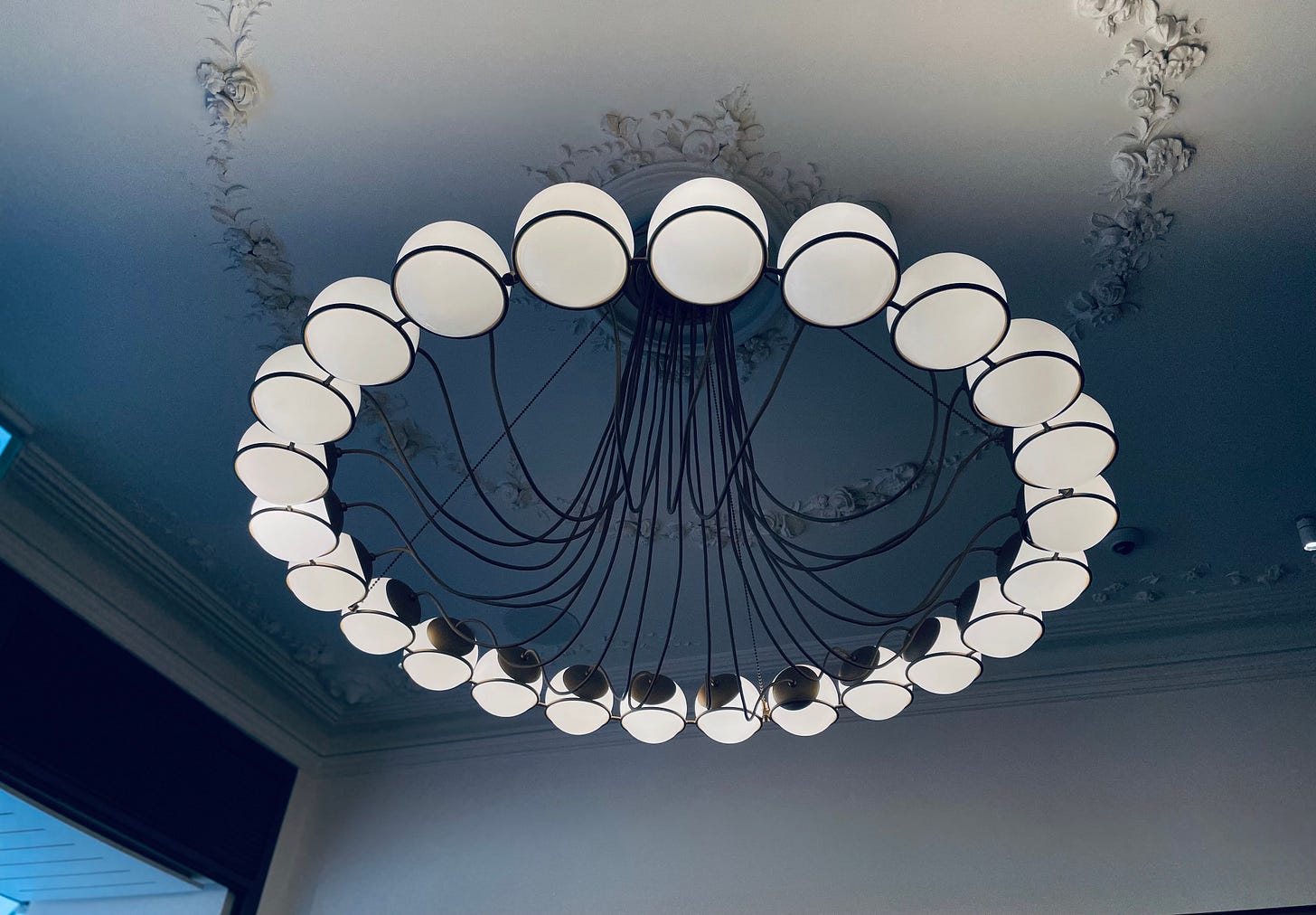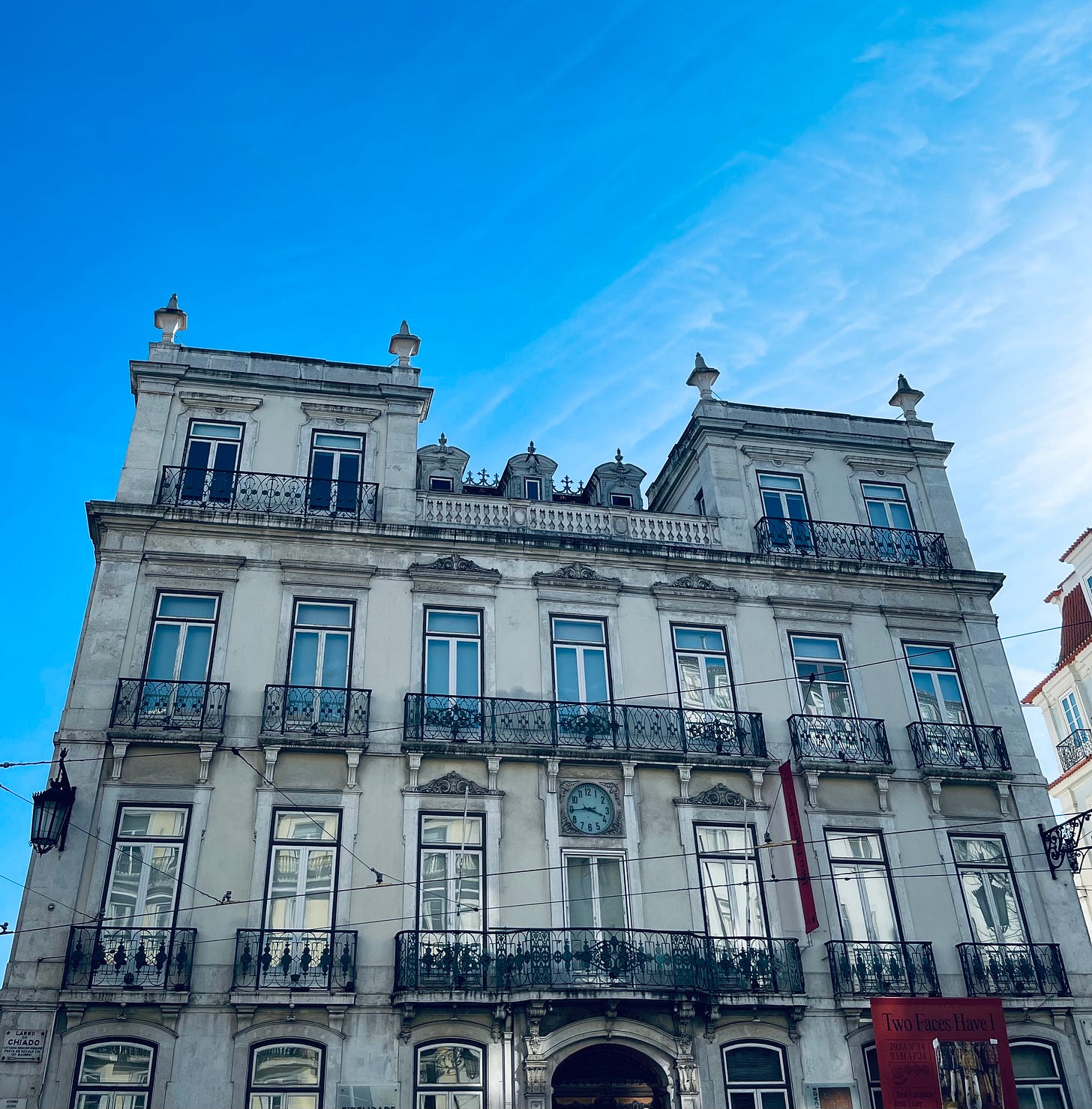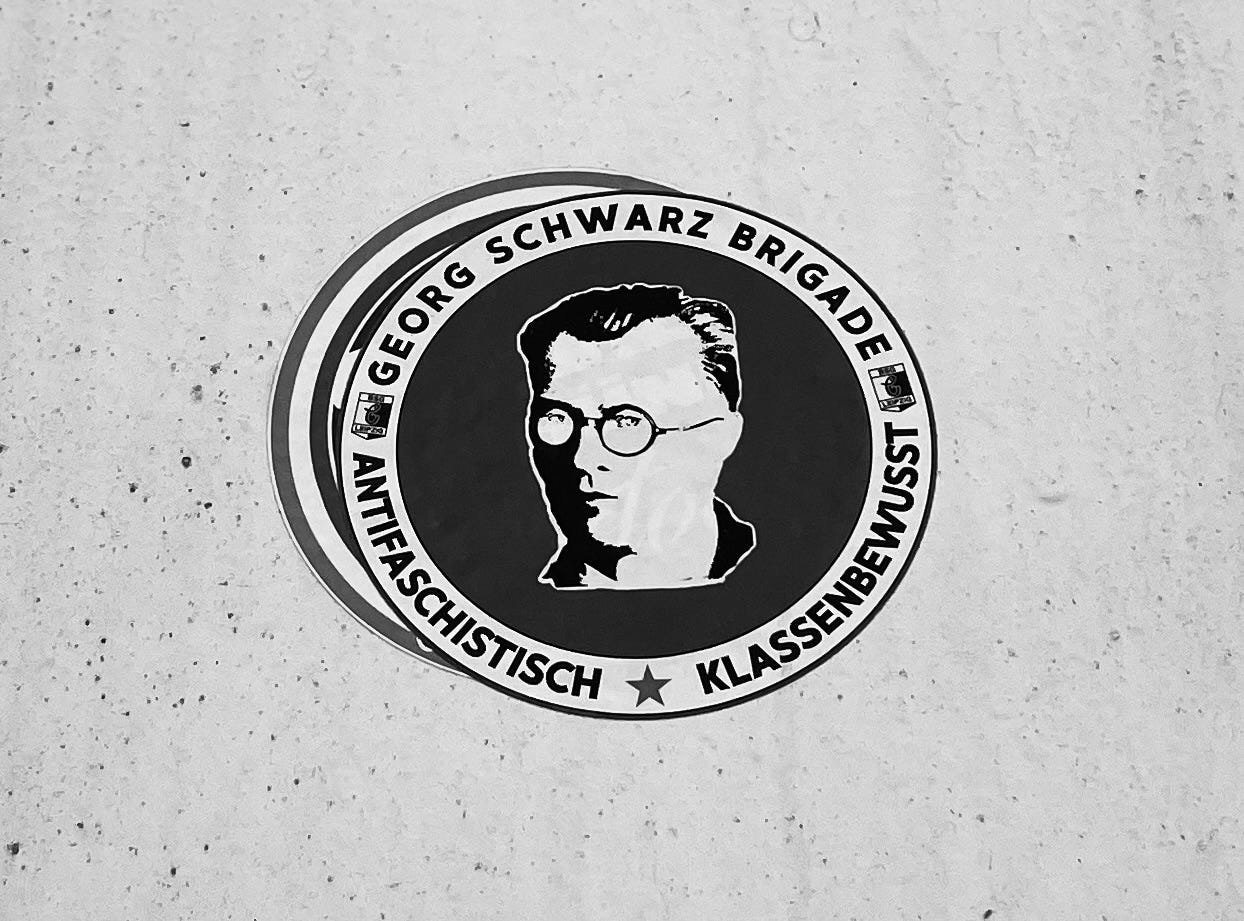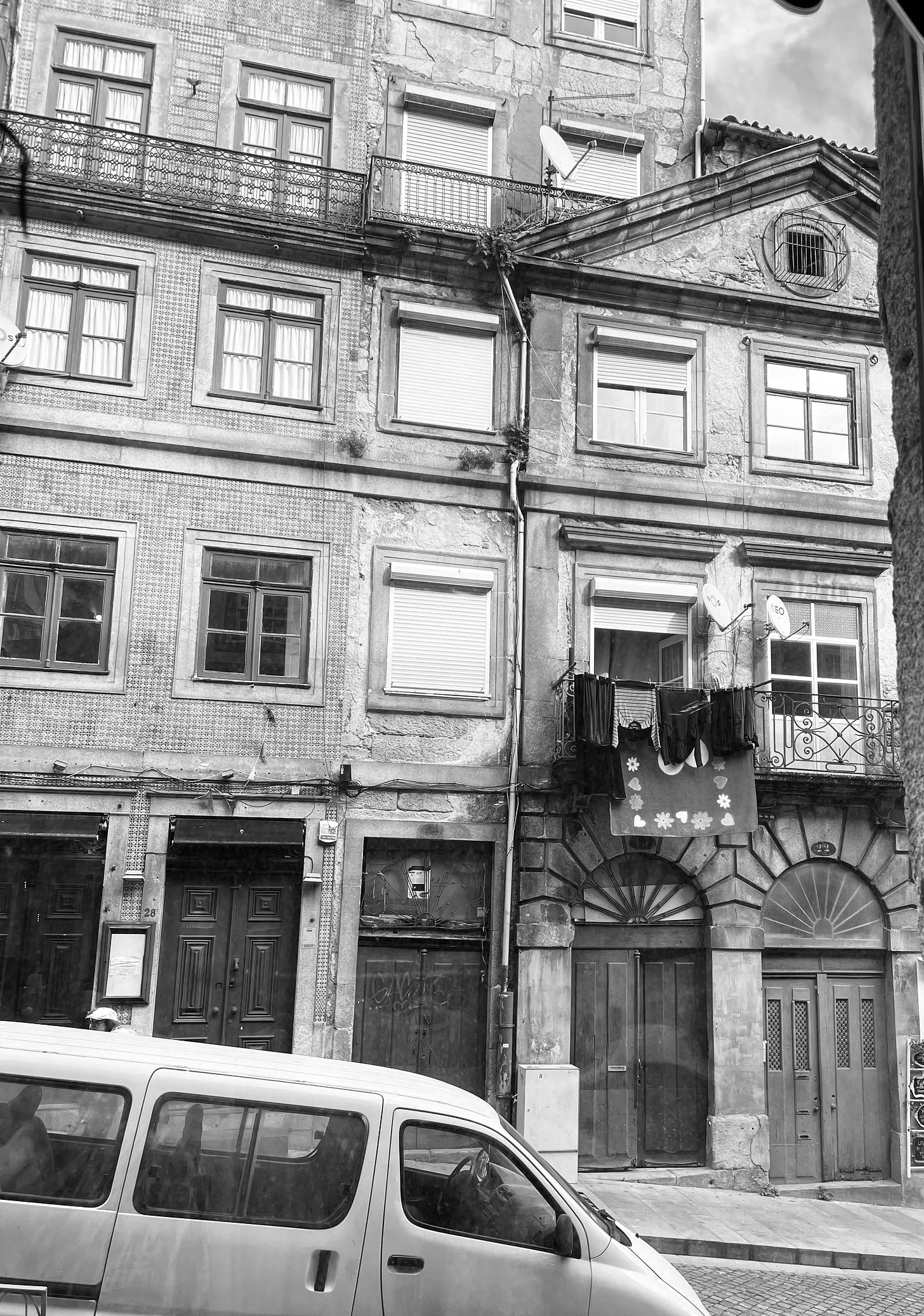If lucky from your travels and all its travails, you get to bring home snippets of it, in images and stories to go between as subtext: commentaries of what you felt, have heard and read, and those you have apprehended stay with you permanently. Rummaging in the beauty of your experience.
And when a mind wants to travel - and the body grows into the wish - and money complies with it - a location astutely following - then you’re IN for an alignment. Voila! Is what you hear behind your erect ears. Life is suddenly afoot. You’re set to travel to some distant land where it’s full of light and scores of delight. Where the hills are coloured Culture, and her saddles carry the Profound through music. Her ledges are cobblestoned, and the ridges suddenly open up to a flea market rather alluring. If you’re prospecting for a fuller life, more colours, and sounds so blest, Lisbon, or Lisboa in Portuguese, might be the very spot to be.
THE CITY OF MUSIC:
M stands for Fado and Maria Severa Is the singer. A prostitute by trade, she rose to an astonishing fame against all anticipation, like dust falling upward from the floors of winding mosaic pavements in Lisboa, audibly around her cold, dense bends. She embodied the music that still flows through the veins of the city, and runs crisscrossed up her hills.
Fado scores are of a certain melancholy, a romantic fatalism, and pain of detachment and discord. It is far from an explanation and only to experience. Native to Portugal, the lyrics are poetic, and the language barrier won’t deter you from taking it in. Anyone can dive in, even the most alien and wandering tourists. Fado turns them soon into travellers if not natives.
You can hear Fado on the outdoor patios, with food and wine as decorum. Regardless of the weather, it packs an audience. Everybody’s heard of it, and nobody has survived the charm of its incantations, the wild appeal of its strains, and its magnetic draw towards the heaviness of the heart.
The tunes fade as you walk away, yet catch up with what was once remembered from the corners of Moraria and off the curves of Maria Severa. And they make you draw out a pen and scribble one of your own….
…Land of my father, to the sand of my soul - that crusty old bowl,
across the peninsular, the seamen carried a howl,
the ship thence cross, and the bridge since had burned,
A severance. Silence. In sailor’s parlance, the woe is earned,
O Maria! How the tide has turned.
I threw a spell, and that didn’t bind
I bawled my heart out, but nobody took a mind.
I’m merely a place, holding a space, existing nonetheless.
I still love the sea,
despite how it had abandoned me,
splitting the shore in two,
between me and my kin, my book of who’s who…
The Fado Museum keeps the history in check and pays tribute to the mystery of the music and the artists. Like the notes and chords at display, the place itself puts out a droopy gaze, and longs for a returning love, a revisit sometime in the future.
SNAPSHOTS: PLACE & PEOPLE:
The days are of ascending and descending humps. The city is hilly, and they are the business cards locals carry. The Hills tell of the economy - with the well-offs summit over the rest. People’s status, background, and history—the whole story—are ascribed to their foothill abodes. But you’d sense a certain comfort in the idea of Us and Them. In their walks and talks, people seem settled and more mature toward the thought of disparity.
Bent and bruised Dacias roam the streets of Lisbon with pride. Still more comfortable than Citroens, these motorised seating arrangements navigate the nooks and crannies of the city with nothing but fashionable ease.
The cabbies in them sing in screams as they dash by. “Hello. Is it me you’re looking for?” - drawing attention and points from potential passengers. Nobody makes you feel invisible. Prejudice is highly secluded, overshadowed by the common etiquette. Elite-dressed women cover their yawns, men gesture after their coughs and burps - sensing someone’s presence. Everyday interactions carry a license to gentility, allowing aliens (like you) to aclimatlize, localize, and mould in shape. There’s no exclusive identity or a single mode of being, for which your flaneurs would feel breezier, and the sight of life and the gemeinschaft, clearer.
**
Christmas comes Big in town, but June rings bigger with the summer festivities—with music, drinks, and, of course, the BBQ fish. All the houses you’d see in Alfama stays festooned yearlong. Things are squishy up there. Parked cars, wee gardens, window decors, and shared clotheslines, all couped up like poultry, or tinned seafood. Packed. You could smell the kitchens through every window around noon whilst meandering.
June is spelled S-A-R-D-I-N-E all across Alfama. A novice would end up circling paths there in strange predicament, between the pungent cooking smell and the delicate delight in its taste. Sardines, with its acquired taste, are present even in the sweat one pours out.
Rows of clothes are hung like drapes, rather exposing people’s inner lives. Bedsheets on the outside, inners in, switching ends once half-dried. The smell of chocolate soaked in ginjinha might waft you down to your knees - romantic - as if a set of lover’s lips strongly growing into yours. Between the dried grapevines, statues, tiles, graffiti, music, signs of devotion to the Marquis de Pombal, and pigeons with diseased feet shooing each other for lunch money from the tourists, it’s impossible not to get lost in such heaves of ecstasy.
Tour guides speak English with a curious tongue roll. Their words transmute and transmit in waves, crashing warmly somehow into the listening hearts.
Hearing a Jao and a Javi converse over the phone crossing the street is pure delight.
TOURISTS BUZZ AUDIBLY:
Travelling facilitates overhearing fellow travellers. It lets you experience how some are jolly, some giddy, some grateful and the rest are simply full of it - sitting firmly on an idea immatured and unrefined in them. You could hear the southwest Londoners, their all-encompassing remarks one minute on how ‘bacana’ the local culture is - then on to some disjunctive Japanese Restaurant Etiquette in the next - back to Iberian cartography soon after - followed droolingly by drunken sports stories till the lights are out - while waiting for their succulent cod (for in cod, they’d set trust) at Time Out.
Drawn across the pond, the Americans too come off interestingly. In the midst of their stays, they can be heard, quite impossible not to, using overtly the words ‘little’ and ‘cute’ to attach and annouce themselves –having somewhat of a themed experience. Some, of course, are lucky to return home with a hint of realisation - that bigger is not always better. Or Expansion draws truth only when associated with the mind (and not one’s girth). Some are lucky to sense here the certitude and credence for a mere life by the end of their travels.
A TRAIN RIDE TO PORTO:
The Irish girl sitting in front may affront you with an open laptop. Squinting but still curious against the sun, you can peep between the seats, to steal a glimpse of her reflection, which is still pasted on the opposite window. And you’ll wonder what goes through her mind as she keeps mentioning “strategic directions” and “marketing strategies” about eight hundred and ninety times over her hour-long phone call.
Also, “Digital communities with subcultures” - about two hundred times.
The train to Porto maintains a smooth 210km/h speed, not chomping through the tracks but wafting over like fast-rolling cotton-ball clouds. It is quiet and serene inside - with ample space, plentiful characters, and timid interactions - proving how travelling can be the font of every newfound peace and pleasure.
PORTO: TILES, PAVEMENT AND THE PERSPECTIVE
The city you’ll find standing on granite. It is what you see in a thousand shapes and forms, the only element in existence and of celebration. The cracks went east to west every time Porto was drilled for upgrades, then glued and heated to bring back the hue: her famous blue.
Cobblestones, potted plants, and the alcoves, all made of tiles—the whole town is a walk-on art—an exhibition of taste to whisk up a cultivated gathering. These tiles also keep the building fire safe, the reflections and their facing in certain ways keep the insides lit and warm. Jorge Colaço hand painted most of the tiles you’d see here - the glazed blue Azulejos - and remained a monument himself of repute. Some facades took decades of his ceaseless efforts, and they are worth it. You’d see the beauty and exquisiteness crossing over frequently, stitches of her majestic blanket unfurling slowly around your steps, thoroughly beguiling you... an amazing town!
There is a proud wonkiness in the make, you’d also see it everywhere. A particular skew has turned mainstream. Asymmetries and irregularities are considered and embraced as part of its aesthetics. And it manifests through her uneven facades, irregularly shaped windows, and many other ostentatious ornaments. The buildings' angular shape and irregular geometry - their dire need to distribute the seismic weight across the perimeters, in preparation for the frequent earthquakes - stands stark. Strange but dynamic, firm and fit, calling in an off-kilter awareness.
The baldachins: a religious relic depicting history, are one of its many examples - especially the canopy over the tomb of Alexandre Herculano. A novelist, known famously for provoking and denouncing the fanaticism and ignorance of the clergy is worth a ponderous visit.
The epic mural you’d inevitably come across on your walks is called Perspéntico. Street artist Liqen honours the (big) feline that once saved the town from a raging plague by vigorously exercising its appetite and reproductiveness. Sitting by the corner of the smallest street in Porto, the Afonso Martins Alho Street, the cat is painted blue, naturally, and holds in its back the entire city in development. Amazing works by artists like Dheo, Daniel Eime, Hazul, Alexandre Farto (aka Vhils) and tons more are sprayed all over the city’s walls.
The Chardron brothers ran the town back in the day. The tram lines and remnants of the city's posh and lavishness still stand to their credit. The locals still remember them and bring them up with mixed emotions. Their account changes travelling through many men and their many minds.
THE BOOKSTORE
Owned by the estate of the Lello brotherhood, Livaria Lello was officially named the prettiest bookstore in the world in 2006. Since acquiring it from the Chardron brothers, whose name is still marked in the building, through numerous other purchases, the holding remained highly profitable despite the hostilities of the paper book industry. A ticketed venue, with the right to publish the classics, the store a selfie hotspot along the spiral staircases, and a stunning achievement on multiple levels.
POEMIC:
Some places are so indefatigably romantic that they effortlessly splurge out a poem - even of a cemented heart. A certain knowing hits you when you’re there - through multiple sensories, if not all, in confluence to harmony. Going through the smells, tastes, whiffs, and brushes, you fall in love with the place.
And as Jack Kerouac preferred when he said: “Don't use the phone. People are never ready to answer it. Use poetry.” - here’s my tribute to Porto.
Into The waves of Iberia: a travelogue
I think of being, absolutely elsewhere – I dream of reaching out fully, completely,
Don’t mind if it's up a tree or under the sea.
I long to migrate to a foreign shore, over a ground of frost-hoar,
receding into a new distance, starting to live each instance.
I pine for getting lost, without a taunt - or a panic that haunts – with a hundred needles, or a mad vibe that endlessly fiddles - I want the trip to take the traveller and not the other way;
I see it being my ripening feat, achingly precious,
with each step forward, anew, unpretentious.
And I fancy myself footloose - happy, but out of clues, somewhere, in heavenly recluse -
Where the sound is different, and so is the tongue -
Where the wisdom in the trees sweeps the dread off, and the pause in the wind returns a balance –
Where pavements are made of colours, and walls are of art décos-
Where alleys are leased to the guardian cats and the slopes are to geckos.
Where a cadence sits softly on the way of life - and batons it without strife, and –
Where it wakes me up thin-skinned, to let the implicit in -
Where it heaves me up the steep monastery, then sits me by the shores of history – in tidal regularity,
Where it wafts me onshore, to sediments of many millennia sparkling underneath,
to smell the beauty, so dense, of a pink heath -
Where a commute is leafing through the twisty streets down to some overpass marked ‘forgotten’ -
Under which, there’s a commune to catch my fall, to take the edge off my failings –
Where the young minds the old, and mornings squint up over the peninsula -
Where doors are always open to sit out a blinding sun or the pouring rain -
Where the food is served to strangers, and smiles go around to garnish it –
Where stories flare up under the night sky, laughter crackles around the coal, and Music flows into the soul –
And where the mind rolls out of control - and holds a pale, insipid fire that propels - and stretches me to a sweet twang -
without burning itself down, and extending grief,
without letting the spirit flee like a night thief,
I fancy a place that transplants me for the better, like an old oak, reseeding afar - gasping into the wind, privileged to what’s on offer - growing bigger.
Harry Potter Matter
Bloated poplar bottoms in the parks (Jardim de Joao Chagas), the robes on university goers, the spiral stairs inside the bookstore (Livraria Lello), and the architecture by the large—all justifiably remind one of the fantasy book series of the century (if not of all times). No wonder residing around 1991, J. K. Rowling found here her Golden Snidget, and wrote the first three chapters of ‘Harry Potter and the Philosopher's Stone’.
GOD AND ALL, THE GOD IN ALL
Faith is in full display here, fronting travellers of all sorts, reminding how little time is left on earth, enforcing the message: ‘Life is just one small piece of light between two eternal darknesses’ (Nabokov). The insignias are unmistakably unavoidable. All matters were once decided under the heels of the church, inside of some of the beautiful Franciscan monasteries you’d see – all open now for walk-ins. The city is a shining example of her ecclesiastic rule. The coat of arms is seen purposefully placed around the doors. For the aristocrats, right above and centre, whereas the nouveau riche had them on one side of the fore. Betting was a sin unless promulgated by the holy house (Merci church), much like the national lottery now. The bishop held the table, hotlinking between the locals and the pope, chairing decisions for thousands of years without an exception or interruption.
And everything bears its mark. An amalgam of baroque squares, neoclassical churches and modernist edifices (such as the stock exchange palace) are spread throughout the city. The placings of the churches, their numbers, the concentration and sparseness of the population, the makeup of the landscapes and mindscapes, the affirmative actions, and whatnot…
And now, some photos to bid adieu…
